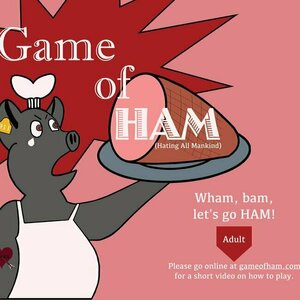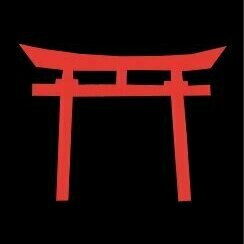
Templates for Pages (for iPad, iPhone, iPod touch)
Productivity and Utilities
App
260 TEMPLATES FOR PAGES Templates for Pages (for iPad, iPhone, iPod touch) is an amazing add-on for...

The Independence Incident
Tabletop Game
We've been tracking a group calling themselves the Culper Ring who believes there are elaborate...
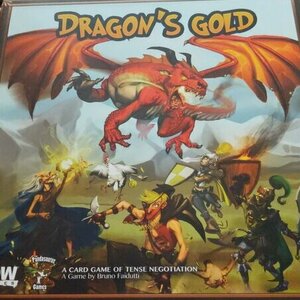
Dragon's Gold
Tabletop Game
Dragon's Gold is a game where you are fighting off dragon's in an attempt to take their gold....
Negotiation Board Game Tabletop Game Dragon's Gold
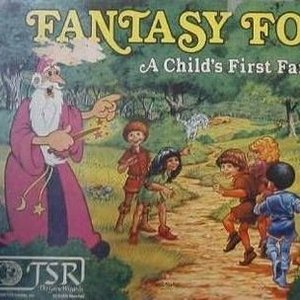
Fantasy Forest
Tabletop Game
A children's fantasy game from the makers of Dungeons & Dragons Adventure Game. Each player is a...
Boardgames Retrogames DnDGames

Villages of Valeria
Tabletop Game
A village-building card game set in the world of Valeria. Establish resources, construct buildings,...
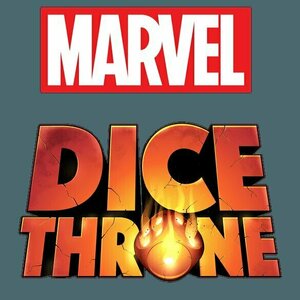
Marvel Dice Throne
Tabletop Game
In Marvel Dice Throne , you become one of eight of Marvel's most famous heroes, including Black...
Purple Phoenix Games (2266 KP) rated Game of HAM: Adult Set in Tabletop Games
Jul 1, 2020
Game of HAM is a card and board game similar to Apples to Apples and the dreaded Cards Against Humanity. However, HAM differs from these with the addition of the board and actual game play. Yes, each round still needs a judge player and the others to play cards based on a prompt, but after that the game becomes, well, a game. In fact, this game has a board with spaces to travel and a goal space to race to in order to determine the winner.
DISCLAIMER: We were provided a prototype copy of this game for the purposes of this review. These are preview copy components, and the final components will probably be different from these shown. Also, it is not my intention to detail every rule in the game, as there are just too many. You are invited to back the game through the upcoming Kickstarter campaign, order from your FLGS, or purchase through any retailers stocking it after fulfillment. -T
To setup, lay out the modular board pieces in any fashion you would like. We played on a boring 1×4 orientation because we lack imagination. At least at first. Next choose a color token to represent your progress along the board. Separate the colored cards into stacks and place under the corresponding giant ham tokens. Each player will be dealt 10 pink response cards and whomever is chosen to be the first judge player will draw a gray card to begin.
Game of HAM comes shipped with about a million cards and an equal number of ways to play. For this preview we played typical core games without any special rules (and we even left a “mandatory rule” out – the rulebook said we could). Seriously, the first half of the rulebook is explaining the game, and the second half is allllllllll optional gameplay styles, optional rules, variants, and so forth.
So on a turn, the judge draws a gray (grey?) card, reads it, places it on the table, and the other players will play pink (penk?) cards as responses for the judge to choose a winner. The winning player will then reference the numbers on the bottom of the gray card to determine how many spaces on the board they will travel. As the aim of the game is to get to the goal space, typically the larger number will be chosen. However, in order to win the game a player must land on the goal space exactly, so this is a reason a player may choose the lesser number.
At times players will land on colored spaces on the board. This signifies that they will draw a card of corresponding color to be used on future turns. These cards can be very powerful and affect other players as well. It is these cards along with the actual game board that separates Game of HAM from others in this vein: there is actual game play and decisions to be made aside from choosing cards that create the most lewd scenarios.
Don’t get me wrong – there ARE lots and lots of opportunities to create these scenarios and pick gross things (especially in this Adult Set), but this is not the only goal of the game. In any case, play continues in this fashion – for the vanilla game mode – until a player has reached the goal space on the board exactly. At this point, the group decides which game mode or optional rules they would like to play with next, because this game can be somewhat addicting.
Components. This is a ham-themed game and the components reflect that wonderfully. Like I mentioned earlier, there are at least a zillion cards that come in this box, and they are all great quality. I have only opened one of the several packs of pink cards that come with the game, and I am not at all joking about that. The giant colored ham tokens are awesome, the boards are acceptable, and the rulebook is wonderful. I was also not joking when I said half the rulebook is explaining the game and the other half is describing different modes of play, variants, and optional rules (there are even sections of rules for drinkers and 420-friendly players). All said, the components are great!
Now, I have said this multiple times in my reviews: I HATE Cards Against Humanity. That “game” exists for one purpose: to gross out everyone playing and as an acceptable outlet for people to be as offensive as possible. While Game of HAM is similar in some aspects, I can actually play this game and not want to quit two cards into it. I LIKE that the designers have come up with half a rulebook worth of alternate play modes and optional rules, even some that outright tell you that you can use or not use ANY rule in the book! It’s not the classiest game, of course, but you don’t purchase and play a game called “Game of HAM” for its reflection of your sophistication. You purchase and play this game because you want to have a good time with your friends and family without the need to piss everyone at the table off. I can get behind this.
If you are in the market for a CAH or Apples to Apples replacement, but still want to feel like you can be a social monster for a while, pick up Game of HAM (Adult Set). I don’t know this for fact, but I assume that since this is the “Adult Set” that there will soon also be a “Family Set” or something similar. So Game of HAM may be for you, as long as you are aware of the content within. I recommend Game of HAM for those gamers who know and are comfortable with the content as a great modular card game. I won’t be playing it with my in-laws, but I can certainly play this with my siblings!
Purple Phoenix Games (2266 KP) rated A Battle of Onin in Tabletop Games
Feb 9, 2021
A Battle for Onin is a trick-taking card game where players will be using Shoguns, Ninjas, Samurai, and Monks as suits and each suit will have differing levels of hierarchy. The first player to earn 35 total influence (VP) will claim victory.
DISCLAIMER: We were provided a prototype copy of this game for the purposes of this review. These are preview copy components, and I do not know for sure if the final components will be any different from these shown. Also, it is not my intention to detail every rule in the game, as there are just too many. You are invited to download the rulebook, back the game through the Kickstarter campaign, or through any retailers stocking it after fulfillment. -T
To setup shuffle the deck of cards and deal each player 13 cards. The dealer then flips the top card of the deck and becomes the Ruling Class (trump) for the hand. The game is now setup and ready to begin!\
After the Ruling Class has been revealed, the player left of the dealer will make a bid for how many Conscriptions (tricks) they believe they will take in the round, with a minimum bid of 3 tricks for all players. Each other player will do the same until the leading player’s turn comes back around. That player then proceeds to play cards from hand in attempt to win tricks. Like in most trick-taking games player will need to follow the suit that was led (or flipped at the beginning of the round). A twist here is that trump may not be led until it has been used to win a trick previously within the round.
As mentioned earlier, each suit has a hierarchy of power, where Bronze is the lowest in power increasing to Silver, then to Gold, and finally to Jade. Within these divisions are yet three more classifications of power: one sphere (lowest) to three spheres (most powerful). In addition still is one card from each suit whose background is orange in color and features one large sphere. These are the Legendary cards, and the most powerful of each suit. Legendary cards may be used as the highest-ranking card in their suit, or as a Ruling Class card. When played as Ruling Class (trump) the hierarchy of Legendary cards are as follows: Monk (lowest), Samurai, Ninja, Shogun (most powerful).
Play continues with players using their cards to win Conscriptions (tricks) and meet their bid. Should a player meet their bid exactly then they score Influence (VP) for their tricks won. Should a player win more tricks than bid earlier, they still score Influence for the tricks won, but those tricks in excess of the bid amount are scored also as Corruption. When a player meets seven Corruption they immediately lose 10 Influence and the Corruption counter resets for that player. If, by chance, a player does not meet the mandatory bid of three tricks, their Influence is lowered by one point. However, should a player bid higher than the minimum of three but not meet that bid their score will be reduced by the amount of the bid for the round (example: a player bids seven tricks but earns only five. They reduce their Influence by seven points – ouch).
Once scores are tallied at the end of each round, a winner may be announced if they score at least 35 points. If no winner is crowned this round, a new dealer is assumed and another round setup as at the start of the game.
Components. Again, this is a prototype copy of the game and this copy is actually hand-made by the good people at Guise Gaming. Each card in this copy is laminated and the game box is HAND PAINTED. I have never received a hand painted box before, and it is certainly appreciated. So aside from the non-manufactured components, the art is quite good on the cards. I know some players will have issues with the backgrounds seeming plain, but I quite appreciate it so that I can concentrate on the game and not be overly distracted by what may be happening in the backgrounds.
Gameplay is good, if not a bit confusing at first. With four different suits containing essentially the standard 13 cards per suit it should be an easy no-brainer to keep things squared away. However, I found that having the rule booklet open to the page detailing the hierarchy of sphere color/material was very handy for other players. The Legendary cards are easy to distinguish because they look cool and different from all the other cards. I really know nothing about any Asian language, so the characters (or letters/words) depicted on the cards are of no help to me trying to distinguish power levels.
That said, when contacted by the publisher about A Battle of Onin, they mentioned that other people were calling it a theming of Spades. While I can understand this simplification, what I have yet to mention is that the game also comes with a bevvy of optional scoring rules and a welcoming message to include any sort of house rules deemed enjoyable. Spades does not do that, to my knowledge. While the vanilla gameplay is very similar to Spades, A Battle of Onin using any of these optional scoring modes certainly adds layers of complexity that may be daunting to use at first, but may attract more hardcore gamers.
All in all I am so glad I was able to try A Battle of Onin. Once the suits and power levels are learned, the game is quite snappy and enjoyable. The art is beautiful, and I applaud the use of orange background for the Legendary cards. If you are looking for a different spin on Spades I urge you to take a look at A Battle of Onin. It might surprise you with the varying levels of difficulty found within the optional scoring rules, and a bit more intrigue than the classic game upon which it is based. Personally, my D&D Monk might argue that he is far superior to any Shogun, but also he just kicked in a door that contained a room full of vampires. So there’s that.
Purple Phoenix Games (2266 KP) rated The Seals of Cthulhu in Tabletop Games
Jun 9, 2021
The Seals of Cthulhu is a 2-player game of bluffing and betting in which players are trying to amass the most Control points at the end of 5 rounds. To setup for a game, each player decides which role they will take on: Cultist or Investigator. Each player will receive the 4 Influence markers and 5 Artifact cards corresponding to their chosen role for the game. Players decide on which of the 7 Elder Gods they would like to play with, and takes that card into their hand as well. Select a starting player, who will receive the Active Player Marker, and the game is ready to begin!
On your turn, you will select 1 card from your hand and place it face-down between yourself and your opponent. After selecting a card, you will place a number of Influence markers that you control next to the card, serving as your bid for control of this card. Once you have made your initial bid, your opponent has two choices: accept your bid (taking the Influence markers for themselves) and allowing you to gain control of the card, or they may make their own bid with Influence markers in their control. When bidding against your opponent, you must always bid at least 1 more Influence than what was just bid. This bidding war continues back and forth until one player decides to take the entire Influence bid, letting the other player gain the card. Once a bid has been accepted, the card in question is placed face-up in front of the winning bidder.
Here’s the neat part – each Artifact card is broken in half. At the start of the game, each player each has only half of each Artifact card in hand. So in the bidding process, you may be able to acquire the other half, and thus complete an Artifact. Each Artifact has a special ability that can only be used when completed. Having only half of the Journal isn’t doing you any good! Each special ability may only be used once per game, so choose your opportunities wisely. The game continues in this fashion, with players taking turns bidding and gathering artifacts, until each player has taken 5 turns. Players will then add up the total Control value of their face-up cards, and the player with the highest Control value is the winner!
At its core, the physical gameplay of The Seals of Cthulhu is pretty simple and straightforward. Pick a card, and bid on it. That’s where the simplicity ends, though, and strategy takes over. Both players start with the exact same cards in hand, but how and when you decide to play those cards is what drives the strategy of this game. If you seem too eager when making a bid, perhaps your opponent will vastly outbid you to keep you from getting that card. You can even start the bidding at zero, at the risk of letting your opponent control your bidding round. Are you able to balance the risk/reward of the bidding process in order to maximize your tableau?
And, as stated above, each complete artifact has a special ability that can be used to either benefit you or hinder your opponent. The game also comes with Cultist/Investigator cards that you may choose to use in a game. Both players select one of the characters to become for the game, and each character provides a special ability during the game. At the end of the game, the only cards that are scored from your tableau are the ones that are face-up. Certain abilities, from both Artifacts and characters, allow you to flip cards face-down, thus depriving the player of those end-game points. Another neat thing about this game is that even if a player runs out of Influence tokens, they can bid with cards they already control in their tableau. Every card has a certain Influence value, and can be added to bids. If your opponent chooses to accept the bid, however, you have to give up that card! It’s important to keep an eye on the cards your opponent already controls, so you don’t just accidentally help them complete an Artifact. The strategic options of this game are vast and variable, and keep both players actively engaged the entire game. The only downside of this game for me is that I wish there were more cards/Artifact options for each play. Perhaps, like the Elder Gods cards, sets that can be interchanged between games as long as both players agree on the cards. Just a little something that can change every game in small ways.
Components. Probably the first thing that drew me to this game on Kickstarter was the color scheme and art style. It looked spooky and vibrant, and it really adds to the immersion in the game. The cards themselves are all large and sturdy, and are clear to read. I did go for the custom sleeve add-on, and those are some high quality sleeves as well. The Cultist and Investigator tokens are shaped and screen printed, and just plain fun to have in hand, as well as the Active Player Marker. The game box itself is designed to look like a creepy old book, and closes magnetically on the side – all of which just makes the theme come more alive!
In general, I am not a fan of bluffing games, but to me, The Seals of Cthulhu feels more like a bidding game than bluffing. Is it my favorite 2-player game? No, but it’s one that I am happy to have in my collection. The gameplay itself feels fresh but fast, and the strategy can be as simple or as complicated as you want it to be. The inclusion of optional character roles adds to the variability of the gameplay, and the requirement to have both halves of an Artifact in order to use its ability adds an extra layer to your strategy. The color scheme and artwork is what originally drew me in to the Kickstarter campaign for this game, but the gameplay is what keeps me coming back. Purple Phoenix Games gives this one a ritualistic 8 / 12. Check it out if you’re on the lookout for more 2-player games!

